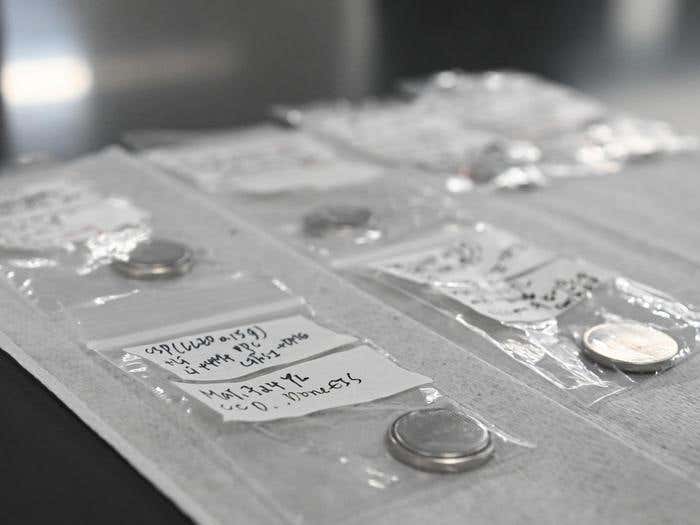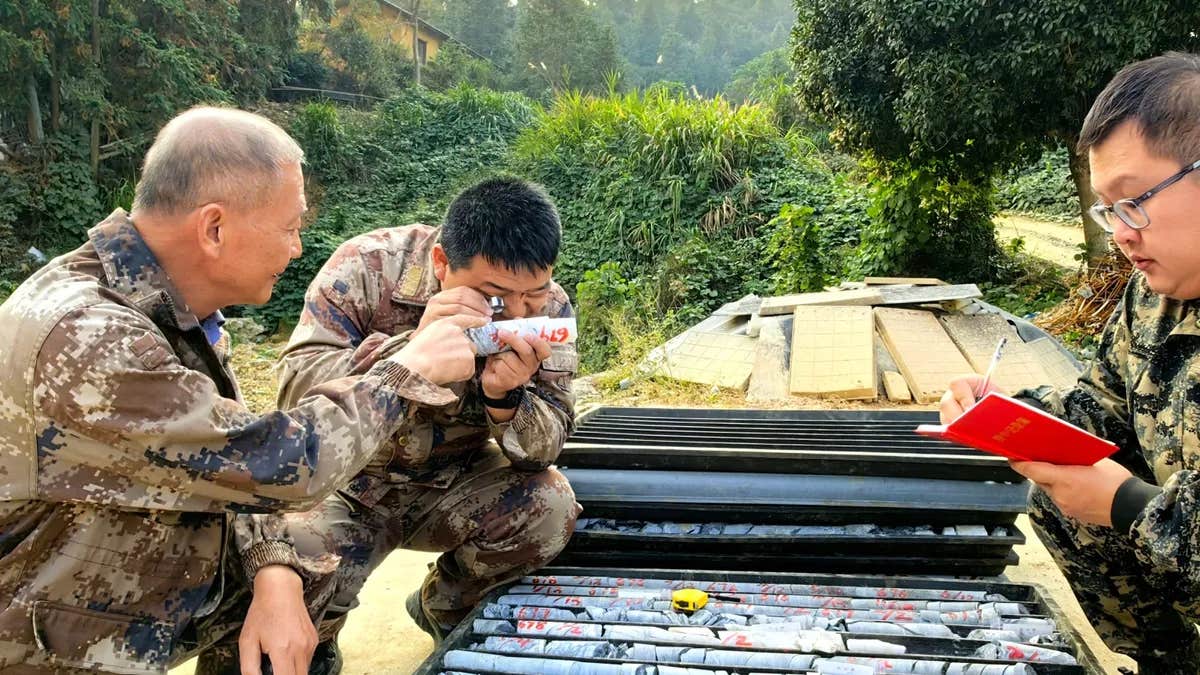Fully recyclable components make rechargeable batteries more sustainable
Researchers have reconfigured the design of solid-state lithium batteries so that all their components can be easily recycled.

Researchers reconfigured the design of solid-state lithium batteries so that of all their components can be easily recycled. They tested their innovation using coin cell batteries, pictured here. (CREDIT: Poornima Tomy/Penn State)
Rechargeable solid-state lithium batteries are an emerging technology that could someday power your cell phone or laptop for days on a single charge. Offering enhanced energy density, they are safer than the flammable lithium-ion batteries currently used in many devices. However, they are not environmentally friendly. Current recycling methods focus on recovering metals in the cathodes, while everything else is wasted.
A team of researchers at Penn State, led by Enrique Gomez, interim associate dean for equity and inclusion and professor of chemical engineering, may have found a solution. They redesigned these solid-state lithium batteries to make all their components easily recyclable. Their findings were published in ACS Energy Letters.
“As the need for rechargeable batteries grows, we need to think about the end-of-life of this technology,” Gomez stated. “We hope our work highlights the possibilities in recycling of solid-state batteries, with the help of some key design elements.”
Typically, most core battery components mix during recycling, forming a “black mass,” which is rich in essential materials but difficult to separate. In solid-state batteries, solid electrolytes compound this problem by mixing with the black mass.
To address this, the researchers inserted two polymer layers at the interfaces between the electrode and the electrolyte before starting the recycling process.
“We proposed that by dissolving the polymer layer during recycling, you can easily separate the electrode from the electrolyte,” explained Yi-Chen Lan, a doctoral student in chemical engineering and first author of the paper. “Without the polymer layer, the electrode and electrolyte mix, making them hard to recycle.”
Once the components were separated, the team created a composite with the recovered metals and electrodes using cold sintering. This process, developed in 2016 by a team led by Clive Randall, director of Penn State’s Materials Research Institute, combines powder-based materials into dense forms at low temperatures through applied pressure using solvents. Gomez and his team recently demonstrated the recycling of solid-state electrolytes using this method.
“We used cold sintering to combine the recovered electrodes with recovered composite solid electrolyte powders, then reconstructed the battery with the polymer layers added,” said Po-Hao Lai, a doctoral student in chemical engineering and co-author on the paper. “This enables us to recycle the whole battery, which we can then recycle again after its use.”
Testing revealed that the reconstructed battery achieved between 92.5% and 93.8% of its original discharge capacity.
“While the commercialization of all-solid-state lithium batteries is still in its early stages, our work provides important insights and ideas for designing recyclable versions of these batteries,” Lan said. “Although we’re not quite there yet, the long-term goal is to apply this innovation to larger batteries for devices like cell phones and laptops once all-solid-state technology becomes more prevalent.”
Note: Materials provided above by the The Brighter Side of News. Content may be edited for style and length.
Like these kind of feel good stories? Get the Brighter Side of News' newsletter.
Joshua Shavit
Science & Technology Writer | AI and Robotics Reporter
Joshua Shavit is a Los Angeles-based science and technology writer with a passion for exploring the breakthroughs shaping the future. As a contributor to The Brighter Side of News, he focuses on positive and transformative advancements in AI, technology, physics, engineering, robotics and space science. Joshua is currently working towards a Bachelor of Science in Business Administration at the University of California, Berkeley. He combines his academic background with a talent for storytelling, making complex scientific discoveries engaging and accessible. His work highlights the innovators behind the ideas, bringing readers closer to the people driving progress.



